
Mantidae is one of the largest families in the order of praying mantises, based on the type species Mantis religiosa; however, most genera are tropical or subtropical. Historically, this was the only family in the order, and many references still use the term "mantid" to refer to any mantis. Technically, however, "mantid" refers only to members of the family Mantidae, and not the 14 remaining families of mantises. Some of the most recent classifications have promoted a number of the mantid subfamilies to the rank of family, e.g. Iridopterygidae, Sibyllidae, Tarachodidae, Thespidae, and Toxoderidae, while other classifications have reduced the number of subfamilies without elevating them to higher rank.

Hymenopodidae is a family of the order Mantodea (mantises), which contains six subfamilies. Some of the species in this family mimic flowers and are found camouflaged among them; these are called flower mantises. Their coloration is aggressive mimicry, luring prey to approach close enough to be seized and eaten.

Acromantinae is a subfamily of the mantis family Hymenopodidae which contains two tribes and about 13 genera.

Oxypilinae is a subfamily of the mantis family Hymenopodidae.

Rhombodera is a genus of praying mantises native to Asia and possessing common names such as shield mantis, hood mantis, and leaf mantis because of their extended, leaf-like thoraxes.
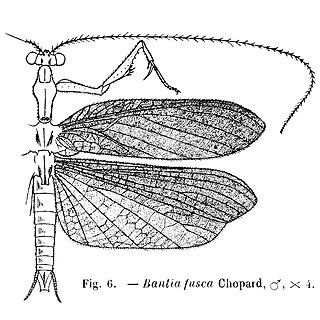
Thespidae is a family of insects in the order Mantodea. Following a major revision of this order in 2019, the old-world subfamilies Haaniinae and Hoplocoryphinae, previously placed here, have been upgraded to family level. Thespidae are mostly Neotropical and few species have reached the Nearctic realm.
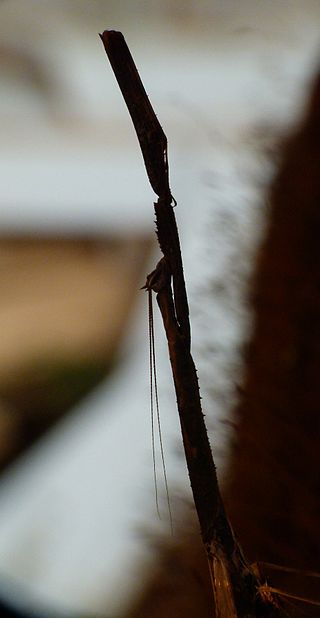
Toxoderidae is a family of praying mantises.
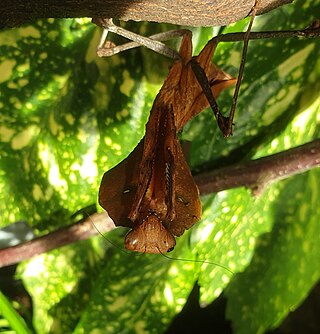
Deroplatyinae is a subfamily in the new (2019) family Deroplatyidae, containing species found in South-East Asia.

Acromantini is a tribe of mantis in the family Hymenopodidae, which contains 9 genera and 35 species:
Deroplatyini is a tribe of the subfamily Deroplatyinae of the family Mantidae of Mantodea.
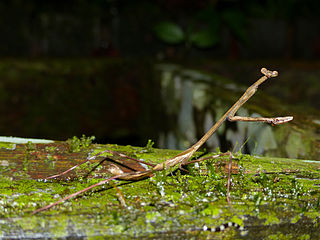
Euchomenella is a genus of mantids and typical of the tribe Euchomenellini. Current records are from Vietnam and Borneo.

Iridopteryginae is a subfamily of mantises in the family Gonypetidae. There are two tribes, distributed in tropical Asia.

Tropidomantinae is a subfamily of mantises in the new (2019) family Nanomantidae. Within the single tribe Tropidomantini there are six genera, distributed in Asia and the Pacific.
Thespinae is a subfamily of mantises in the family Thespidae. There are 16 genera and at least 40 described species: found in most continents.
Phasmomantella is a genus of praying mantids placed in the tribe Euchomenellini and family Deroplatyidae. The two known species appear to be endemic to Vietnam.

The Hierodulinae are a subfamily of praying mantids, originally used by Brunner von Wattenwyl. It was restored as part of a major revision of mantid taxonomy, and now contains genera previously placed elsewhere in the family Mantidae.
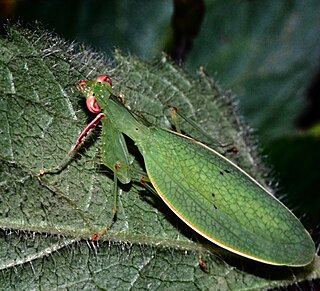
The Nanomantidae are a new (2019) family of praying mantises, based on the type genus Nanomantis. As part of a major revision of mantid taxonomy, genera and tribes have been moved here, substantially replacing the old family Iridopterygidae.
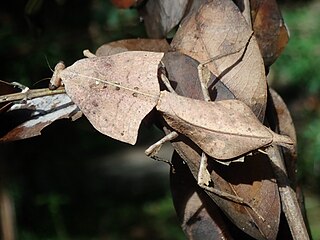
The Deroplatyidae are a new (2019) family of praying mantises, based on the type genus Deroplatys. As part of a major revision of mantis taxonomy, the subfamily Deroplatyinae has been moved here from the previously structured family Mantidae.
Dactylopterygidae is a family of praying mantises, based on the type genus Dactylopteryx. The first use of "Dactylopterygidae" was by Giglio-Tos and it has recently (2019) been revived as part of a major revision of mantis taxonomy; three genera have been separated from others in the subfamily Liturgusinae and moved here from the family Liturgusidae.

Titanodula is a genus of mantids in the subfamily Hierodulinae. There are currently five species placed in Titanodula. The genus is endemic to Asia and is distinguished from the similar genus Hierodula by the large size and unique male genitalia of its member species.















